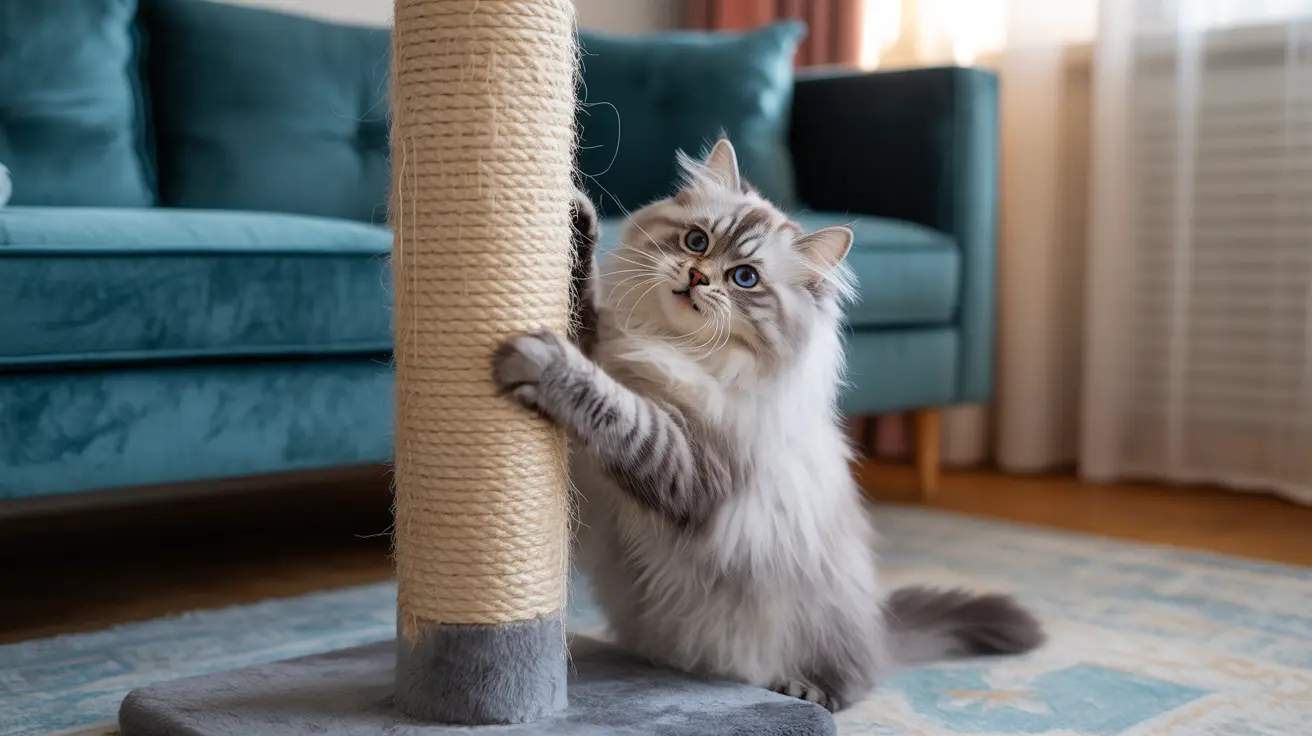Why Cats Scratch: Understanding the Natural Instinct
Scratching serves multiple vital purposes in a cat's life, making it an instinctual behavior that can't (and shouldn't) be completely eliminated. Here are the primary reasons cats engage in scratching:
Physical Maintenance and Exercise
Cats use scratching as a natural way to maintain their claws, removing old nail sheaths and keeping their nails sharp and healthy. This behavior also provides crucial exercise for their muscles, particularly in their front legs, shoulders, and back. Regular scratching helps cats maintain their physical fitness and flexibility.
Territorial Marking
When cats scratch, they leave both visible marks and invisible scent markers from glands in their paws. This territorial marking is a form of communication with other cats, even in indoor-only environments where no other cats are present. The behavior is deeply rooted in their instincts.
Identifying Why Your Cat Targets Furniture
While not all cats scratch furniture, many are drawn to household items for several reasons:
Location and Accessibility
Cats often choose furniture in prominent locations because they prefer to mark territory in socially significant areas. Your couch or favorite chair might be targeted simply because it's where you spend most of your time.
Material Appeal
- Woven fabrics
- Leather
- Carpet-like materials
- Wood surfaces
Effective Prevention Strategies
To protect your furniture while supporting your cat's natural behaviors, consider implementing these proven solutions:
Provide Alternative Scratching Surfaces
- Sturdy construction that doesn't wobble
- Appropriate height for full stretching
- Various textures to suit your cat's preferences
- Strategic placement near furniture they typically target
Environmental Modifications
- Apply double-sided tape to furniture surfaces
- Use furniture covers or protective panels
- Place scratching posts near targeted furniture
- Reward your cat for using appropriate scratching surfaces
Frequently Asked Questions
Do all cats naturally scratch furniture or only some?
While all cats have a natural scratching instinct, not all cats target furniture. Each cat has individual preferences for scratching surfaces, and with proper alternatives available, many cats will choose appropriate scratching posts over furniture.
Why do cats scratch furniture and what purposes does this behavior serve?
Cats scratch furniture for multiple reasons: to maintain their claws, mark territory, exercise their muscles, and stretch. It's also a way to relieve stress and express excitement or anxiety.
What types of scratching posts or materials best prevent cats from scratching furniture?
The best scratching posts are sturdy, tall enough for full stretching, and made of materials like sisal rope, corrugated cardboard, or natural wood. Different cats prefer different textures, so offering variety is important.
How can I effectively discourage my cat from scratching my couch or other furniture?
Use a combination of deterrents (like double-sided tape or aluminum foil) on furniture, provide attractive alternatives, and positively reinforce appropriate scratching behavior. Never punish your cat for scratching.
Are there special techniques or products that help redirect cat scratching to appropriate surfaces?
Yes, products like catnip spray applied to scratching posts, positive reinforcement training, and strategic placement of scratching posts near furniture can help redirect scratching behavior effectively.
Conclusion
While scratching is a natural behavior for all cats, furniture scratching can be effectively managed through understanding, preparation, and positive reinforcement. By providing appropriate alternatives and making environmental modifications, you can protect your furniture while ensuring your cat's natural needs are met.






